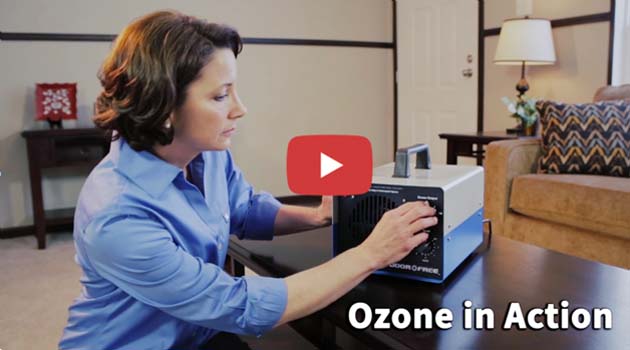Ionizers VS Ozone Generators
What is the difference between a Negative Ion Generator and an Ozone Generator?
An ozone generator produces ozone that attacks the source of odor causing gases through a process called oxidation and permanently removes the odor. This is very different from a negative ion generator, or ionizer, whose primary purpose is to reduce particles like dust and pollen floating around in air spaces.
Small floating dust particles can sometimes be noticed in a ray of light shining through a window into a room. An air ionizer is designed to target these dust particles that float in the air. These dust particles are positively charged and constantly repel each other. For example, if you ever took two magnets and tried to put their positive poles together, you would immediately observe that they strongly repel each other. This same type of repelling action keeps small particles suspended in the air.
Air ionizers emit negatively charged particles that cause some particles take on a negative charge. The negative and positive particles then attract each other to form clumps that fall or precipitate to the floor or onto other surfaces. Ionizers are commonly used in industries that produce a lot of dust or powder in their production process. The ionizers are set up with vats under them to collect the powder and are called particle precipitators.
Air ionizers were once sold for 24/7 use in homes and offices for air treatment while the space was occupied. In creating the electrical charge, the ionizer also produced a small amount of ozone that made the air smell fresher. One of the most popular air ionizers was the Ionic Breeze that was sold by The Sharper Image to remove particles and also make homes smell fresher. However, Consumer Reports, a magazine dedicated to testing and evaluating consumer products, released an article in 2003 on air ionizers that cast serious doubts on Ionic Breeze's claims to treat the air. The article found that ionizers such as the Ionic Breeze have a low particle removal rate when compared to traditional HEPA type filters. HEPA (high efficiency particulate air) filters trap airborne particles as they pass through the filter housing.
The Sharper Image was not pleased by the Consumer Reports article and sued the magazine. The lawsuit was dismissed and The Sharper Image was forced to pay all legal fees. And this was not the end of the negative publicity for the Ionic Breeze ionizer.
Consumer Reports issued a second report in 2005. Not only did the Ionic Breeze (as well as other air ionizers) fail to significantly improve indoor air quality, they also released higher levels of ozone into the air than is recommended by the EPA and FDA for occupied spaces. In response The Sharper Image announced a new "Ozone Guard" attachment to reduce the amount of ozone released. So at that point, not only did it not remove particles very well, but it also did not make homes smell better. The company’s sales never recovered and in 2008 went under and closed down all its stores.
Ozone generators, on the other hand, are designed to attack odors at the source, and oxidize the substances that are causing odors, so they do not return after treatment. They have been used commercially for decades by hotels, apartments, auto dealers as well as smoke and fire remediation companies. These ozone machines are designed to eliminate gases not particles.
Ozone generators are both powerful and effective but should only be used while the space is unoccupied. Their purpose is to shock treat and permanently remove the source of the odor.









